Is Wood Ash Good for Grass? What You Need To Know
Got some wood ash that you’re thinking about putting on your grass, but not sure it’s good for it?
You’ve probably heard that it’s a good fertilizer for lawns and gardens since it’s a natural byproduct of burning wood.
But is it really all that?
The truth is that wood ash actually is good for your lawn.
We’ve got all the deets about its benefits and potential drawbacks for your lawn.
The Perks of Using Wood Ash on Your Lawn
Turns out, this seemingly humble byproduct of burning wood can actually do a lot of good for your lawn.
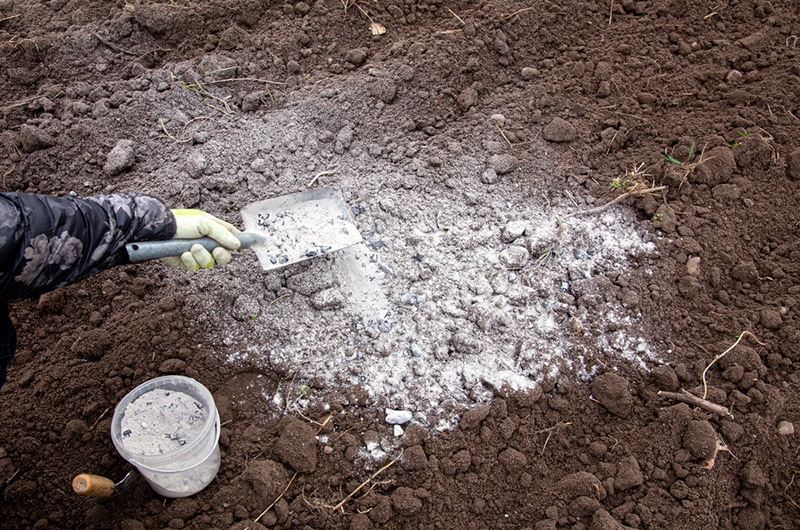
Here’s the lowdown on some of the advantages:
Nutrient Boost: Potassium, Calcium, and Magnesium
First up, wood ash is chock-full of essential nutrients that can give your grass a healthy boost.
We’re talking potassium, calcium, and magnesium – all important minerals for strong, vibrant growth.
Potassium is a key player in overall plant health, helping to regulate water uptake and improving resistance to disease.
Calcium contributes to strong cell walls and better root development, while magnesium plays a crucial role in photosynthesis.
So, sprinkling some wood ash on your lawn can be like givin’ it a multivitamin.
Balancing Soil pH Levels: Sweetening the Deal
Another perk of using wood ash on your grass is its ability to help balance soil pH levels.
Wood ash is alkaline in nature, which means it can help “sweeten” acidic soils (raise the pH) and create a more hospitable environment for your grass to thrive.
Many grass species prefer slightly acidic to neutral soil (a pH of around 6 to 7), so if your soil’s pH is on the lower end, wood ash might be just the ticket to a healthier, happier lawn.
But wait, there’s more! Wood ash can also improve soil structure, making it more porous and better able to retain moisture and nutrients.
Hold Up: Potential Drawbacks and Precautions with Wood Ash
Now, before you go dumpin’ a bucket of wood ash on your lawn, you need to know that there are some potential drawbacks and precautions to consider.
Wood ash can be a great addition to your lawn care arsenal, but it’s not a one-size-fits-all solution.
Here’s some of the potential downsides:
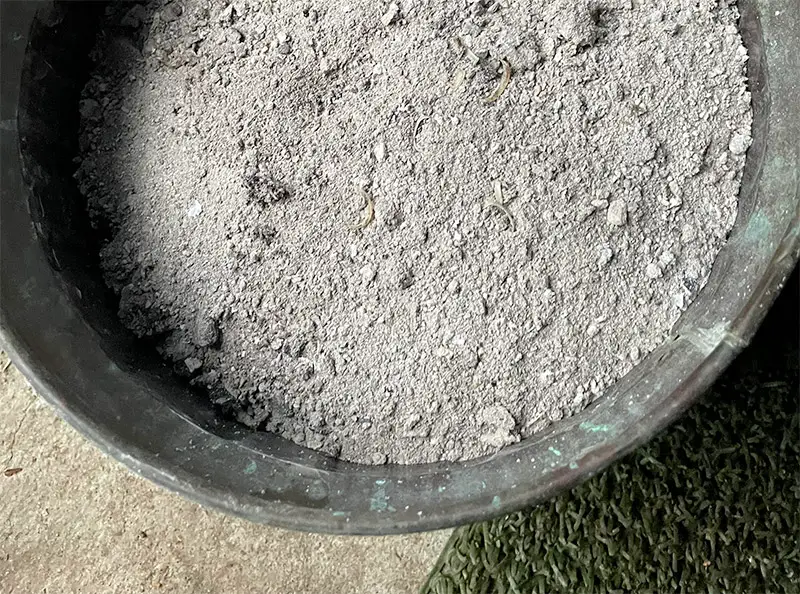
Too Much of a Good Thing: Overdoing Soil pH Adjustment
While wood ash can help raise soil pH levels in acidic soils, it’s possible to overdo it.
If you apply too much wood ash, you can end up making the soil too alkaline, which can actually harm your grass and other plants.
So, it’s crucial to test your soil pH before using wood ash and to apply it in moderation, based on your soil’s specific needs.
Not All Plants Are Ash-Fans: Potential Harm to Acid-Loving Plants
Keep in mind that not all plants dig the alkaline life.
Some plants, like azaleas, rhododendrons, and blueberries, actually prefer acidic soil.
So, if you’ve got these types of acid-loving plants nearby, you’ll want to be extra careful with wood ash application.
Don’t go accidentally turning their cozy acidic home into an alkaline nightmare!
Watch Out for Nasty Stuff: Harmful Substances in Ash from Treated or Painted Wood
It’s also super important to consider the source of your wood ash.
If you’re burnin’ treated or painted wood, the ash can contain harmful substances like heavy metals, chemicals, or toxins that you definitely don’t want on your lawn or in your garden.
So, stick to ash from untreated, unpainted wood to keep your lawn and the environment safe and sound.
Spreadin’ the Ash: How to Properly Use Wood Ash on Grass
So, you’re ready to give wood ash a shot on your lawn? Awesome!
Here’s a step-by-step guide on how to safely and effectively apply wood ash to your grass.
We cover everything from the right amount to use to the best time to apply it.
Step 1: Test Your Soil
First things first, you gotta know what you’re workin’ with.
Test your soil pH before you start spreading any wood ash.
You can pick up a soil test kit at your local garden center or send a sample to a soil testing lab.
This will tell you if your soil is acidic, neutral, or alkaline, and help you determine how much (if any) wood ash you should apply.
Step 2: Calculate the Right Amount
Once you know your soil pH, you can figure out the right amount of wood ash to use.
As a general rule of thumb, don’t apply more than 10 – 15 pounds of wood ash per 1,000 square feet of lawn in a given year.
Of course, it’s always best to follow the recommendations based on your specific soil test results.
Step 3: Timing is Everything
When it comes to applying wood ash, timing matters.
The best time to spread wood ash is when your grass is dormant or just starting to grow, which is in the late fall or early spring.
This gives the ash time to work its magic before the growing season kicks into high gear.
Step 4: Mix and Match with Other Amendments (If Needed)
If your soil test indicates that your lawn needs other amendments in addition to wood ash, like compost or lime, you can mix the wood ash with these materials before spreading it on your grass.
Just make sure you’re following the recommended rates based on those soil test results.
Step 5: Spread the Love (and the Ash)
Ready to spread? Grab a broadcast spreader or drop spreader, and load it up with the wood ash (and other amendments, if needed).
Then, walk across your lawn at a steady pace, making sure to spread the ash evenly.
Be sure to wear gloves and a dust mask while handling the wood ash, as it can be a bit dusty and irritating to the skin and lungs.
Step 6: Water It In
After spreading the wood ash, give your lawn a good watering to help the ash penetrate the soil and start working its magic.
This will also help prevent the ash from blowing away or washing off in heavy rain.
Branchin’ Out: Alternative Uses for Wood Ash in the Garden
Did you know wood ash isn’t just good for your grass?
It’s got a bunch of other handy uses in the garden too!
From compost piles to pest control, wood ash can work wonders in various aspects of your garden game.
Here’s some alternative uses for that extra wood ash:
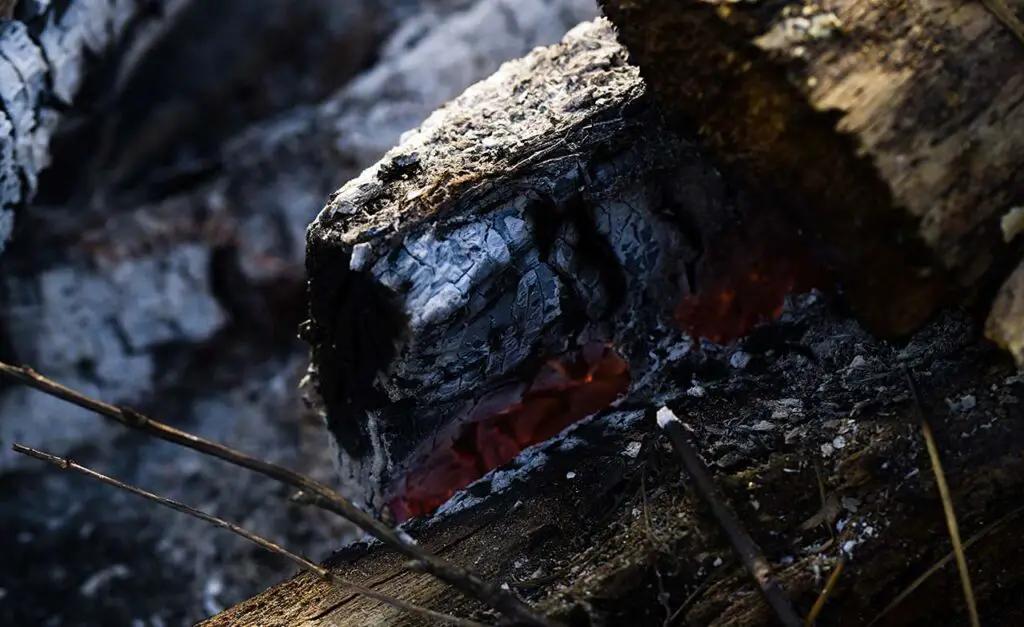
Boost Your Compost Pile
Got a compost pile cookin’ in your backyard? Wood ash can be a great addition.
Just sprinkle some ash on your compost pile every now and then to help balance the pH and add some extra nutrients.
But don’t go overboard – too much ash can make your compost pile too alkaline, which ain’t great for those beneficial microorganisms doin’ their thing.
Scare Off Those Pests
Wood ash can help keep some pesky critters at bay.
Slugs and snails, for instance, aren’t fans of wood ash.
If you’ve got these slimy intruders munchin’ on your plants, try sprinkling a ring of wood ash around the base of your plants.
Just remember to reapply the ash after it rains, or those little buggers will be back for seconds.
Give Acidic Soils a Lift with Liming
If your garden’s got acidic soil that could use a little boost, wood ash can act as a natural liming agent.
It’ll help raise the pH, making the soil more hospitable for plants that prefer neutral to slightly alkaline conditions.
Just like with your lawn, though, you’ll want to test your soil first and apply wood ash based on the test results.
Perk Up Your Tomatoes
Love growin’ tomatoes? Wood ash can help those bad boys thrive!
Tomatoes love the extra potassium and calcium that wood ash provides.
Try sprinkling a little wood ash in the planting hole or around the base of your tomato plants, and watch ’em grow like gangbusters.
Just remember to use it responsibly, test your soil, and keep an eye on your plants for any signs of trouble.
Thinkin’ Green: Environmental Considerations of Using Wood Ash
Interested in the environmental scoop on using wood ash in the garden?
Well, there are some definite pros to recycling wood ash, but there are also a few concerns to keep in mind.
Let’s break it down:
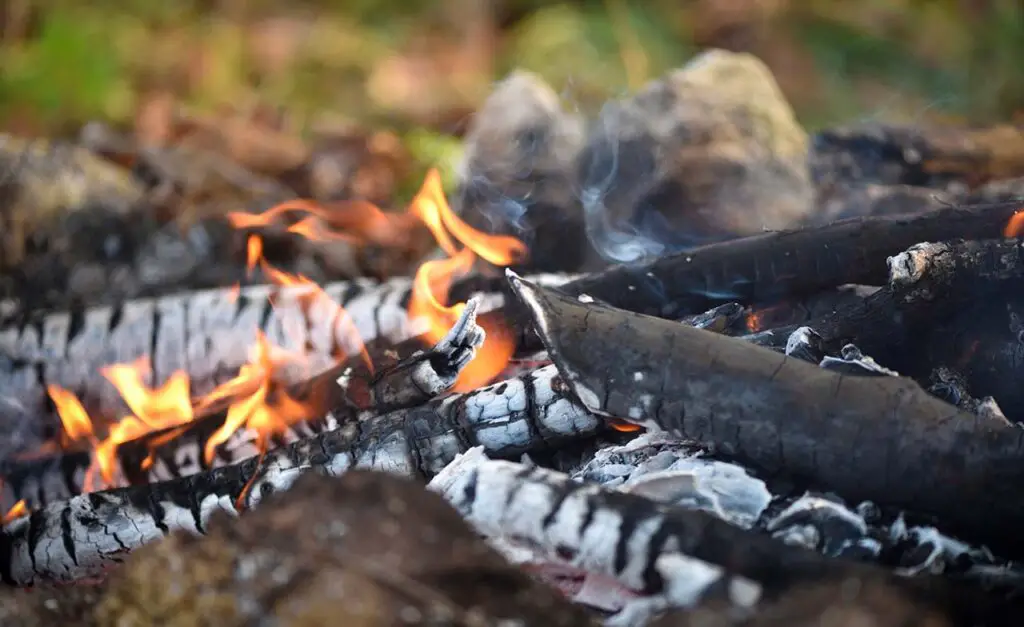
Upcycling and Reducing Waste
First up, using wood ash in your garden is a great way to upcycle a byproduct that might otherwise go to waste.
Instead of tossin’ it in the trash, you’re giving it new life by feedin’ your plants and enrichin’ your soil.
Plus, it’s an all-natural, chemical-free way to boost your garden game – score!
Carbon Footprint Concerns
On the flip side, there are some concerns about the sustainability of wood as a fuel source.
Burnin’ wood releases carbon dioxide into the atmosphere, which ain’t great for climate change.
It’s important to consider where your wood is comin’ from – is it sustainably harvested, or are you contributing to deforestation?
Opt for local, sustainably sourced wood whenever you can.
Combustion Pollutants
Another thing to think about is the release of pollutants during combustion.
When you burn wood, it can release substances like carbon monoxide, nitrogen oxides, and particulate matter into the air.
These pollutants can have negative impacts on air quality and human health, so it’s important to use well-seasoned wood and a properly maintained stove or fireplace to minimize emissions.
Watch Out for Contaminated Ash
Lastly, remember that not all wood ash is created equal.
If you’re burnin’ wood that’s been treated, painted, or contains synthetic materials like plywood or particleboard, the ash could contain harmful substances.
Don’t use that stuff in your garden – it’s bad news for your plants and the environment.
Wood Ash vs. Commercial Fertilizers: Which One’s for You?
Wanna know how wood ash stacks up against commercial fertilizers?
Well, each option has its own set of pros and cons, and the best choice for your garden might depend on your specific needs and preferences.
Let’s weigh the options:
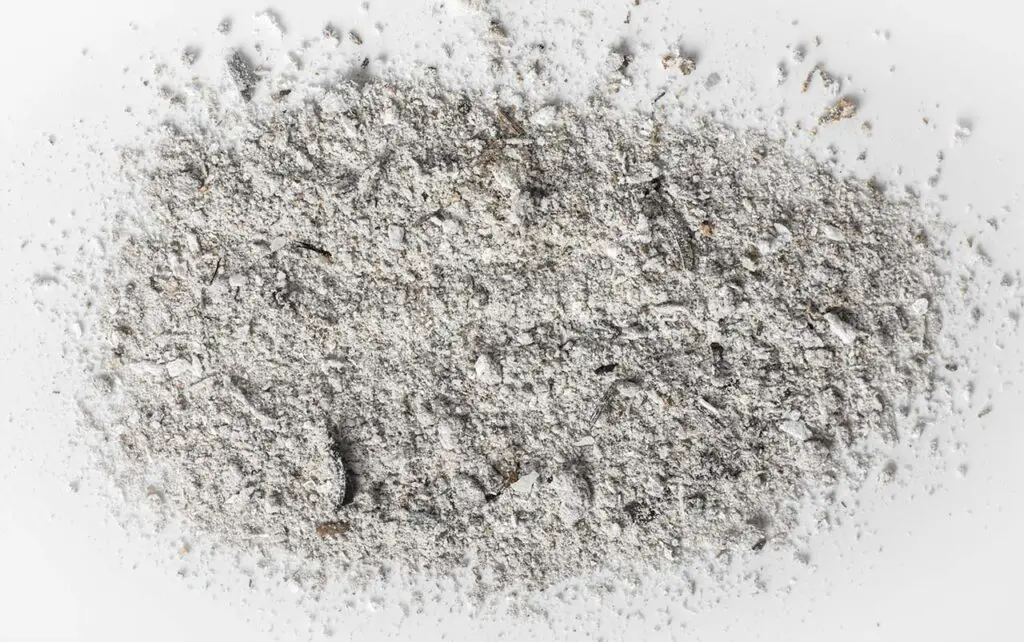
Wood Ash: Pros & Cons
Wood ash can be a great natural alternative to commercial fertilizers.
It’s packed with goodies like potassium, calcium, and magnesium, which your plants will love.
Plus, it’s a sustainable and eco-friendly option if you’re already burnin’ wood for heat.
Here are the main upsides of wood ash:
- Recycles a waste product
- Free and readily available (if you burn wood)
- All-natural and chemical-free
- Can help balance soil pH
- Multi-purpose (fertilizer, pest deterrent, compost booster, etc.)
But wood ash isn’t perfect. It’s got a few drawbacks to keep in mind:
- Can raise soil pH too much if overused
- May not provide all the nutrients your plants need
- Not suitable for all plants or soil types
- Requires careful handling and storage
- Quality can vary depending on the type of wood burned
Commercial Fertilizers: Pros & Cons
On the other hand, commercial fertilizers offer a more predictable and controlled way to nourish your plants.
They’re designed to provide a balanced mix of nutrients, and you can find options tailored to specific plants or soil types.
Here’s what commercial fertilizers bring to the table:
- Precise nutrient ratios
- Options for different plants and soil types
- Quick and easy application
- Consistent quality and performance
But commercial fertilizers ain’t all sunshine and roses.
They’ve got some downsides too:
- Can be pricey
- May contain synthetic chemicals
- Can contribute to nutrient runoff and water pollution
- Not as eco-friendly as wood ash
So, which one’s the winner? It really depends on your needs and priorities.
If you’re into natural and sustainable gardening, wood ash might be the way to go.
But if you need precise control over your plants’ nutrition, commercial fertilizers could be your best bet.
It’s all about finding the right balance for your garden – and hey, maybe a combo of both could be just the ticket.
Wood Ash vs. Commercial Fertilizers – Which One’s Right for Your Lawn?
Both have their own set of pros and cons, but which one should you choose?
Well, let’s sum it up and help you make that call:
Go for Wood Ash If:
- You’re lookin’ for a natural, eco-friendly option
- You’ve got access to a steady supply of untreated wood ash
- Your soil is acidic and needs a pH boost
- You’re okay with a bit of trial and error
Opt for Commercial Fertilizers If:
- You want precise control over the nutrients you’re providing
- You’re lookin’ for a quick and convenient solution
- You have specific plant needs or soil conditions
- You don’t mind spendin’ a bit more for a store-bought product
Ultimately, the choice between wood ash and commercial fertilizers comes down to your personal preferences, gardening goals, and the specific needs of your lawn.
You might even find that a mix of both works best for you.

